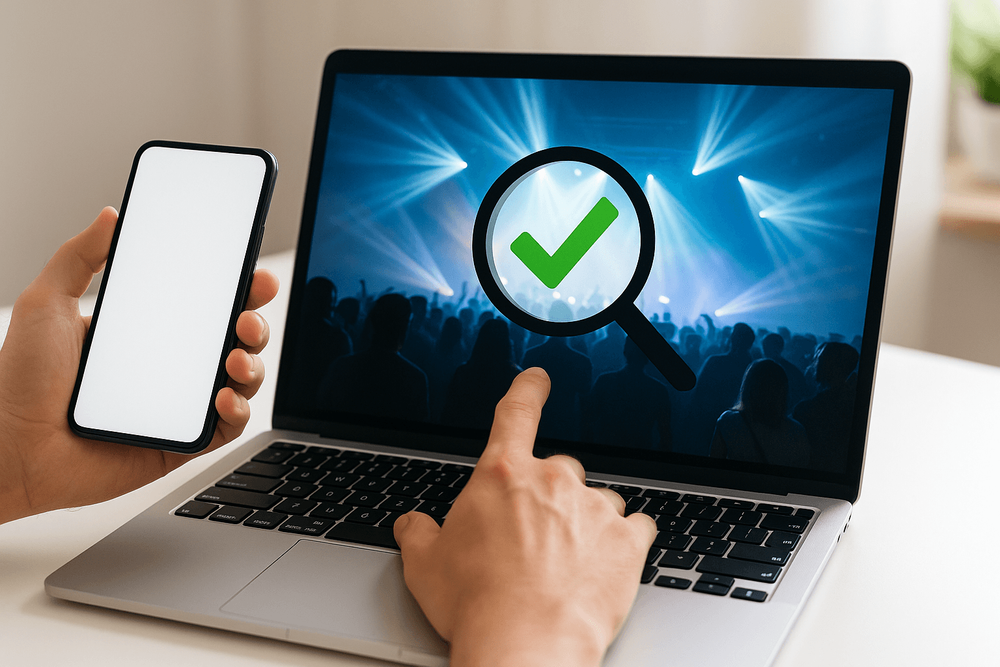How to Authenticate Event Photos Before Sharing Them
by Kathleen Hall, 20 March 2025
We often hear, "A picture is worth a thousand words," which is generally true. However, we should also remember that "not everything we see is true." An image can help us understand a particular scene's feel, atmosphere, and environment. However, there are also chances of manipulation. This is true when you have to authenticate event photos before sharing.
Such manipulations can lead to false assumptions about a particular scene or event, particularly when the image features a scene from a specific event. People serving a particular agenda often do this. They edit images to misguide people or evoke emotions like fear, anger, or sadness.
They often present a scene from a particular event. You will usually witness this issue with a corporate event or demonstration. Hence, you must authenticate an event photo before you assume anything. Sharing such an image further through social media or any other channel can cause issues.
Many people are unaware of methods or techniques to authenticate such visuals. If you are also one of them, this article is here to help you. It outlines various techniques for the authentication of event photos. So, let's start.
Inspect Metadata
A simple technique for authenticating a photo is analysing its EXIF data (Metadata). The attached EXIF data offers plenty of valuable insights for authentication. All digital images come with metadata that features useful information about them.
You can get an idea about the time and date of creation of a photo. The EXIF data will also help you get information about the settings of the camera or device that took the image. You will also find the editing history in the EXIF data. If you find any image editing tool listed in it, you are viewing an altered or modified snap.
Pay Attention to Shadows and Lighting
Various methods are available to authenticate event photos. You can also rely on attention to detail. Analyse the photo to identify inconsistencies in shadows, highlights, and lighting. While doing so, you may witness mismatched lighting sources.
You may see misaligned or conflicting shadow directions in the given image. This could be an indication of digital manipulation. You will need to zoom into the image to check for misaligned shadows and lighting in an event photo. If you have difficulty doing this, use advanced photo editing tools.
Identify Pixel-Level Anomalies
Spot pixel-level anomalies to identify doctored or manipulated event photos. While some specialised tools are helpful, you can also identify anomalies yourself. Zoom into the images and look for inconsistencies in pixels or texture.
Edited or altered areas are usually smoother or blurrier than unedited areas. You may also notice discontinuities when inspecting such parts. Using advanced error level analysis (ELA) tools is also helpful.
You are likely to find discrepancies in the compression levels of different parts. Such discrepancies indicate that the digital images have been altered or manipulated.
Focus on Edges and Outlines
Several elements help you identify photos that have been doctored. Edges and contours are no different. Fake event photos have unnatural borders, uneven edges and visible signs of cropping. You can also identify altered images by looking at them. The process doesn't require you to use any special tools.
All you have to do is focus on the objects in the photos and look for their outlines. This is true when an image contains faces and people. If you notice unnatural edges around people in a photo, it could be a sign of alteration. Poor editing often results in soft edges that are visible to the naked eye.
Get access to the event industry's inside scoop
Use Reverse Image Search to Find Originals
If you come across a suspicious image online, you can search the web to find the original version. You don't need to be an expert to spot altered or manipulated event photos, just compare multiple variations online.
Reverse image search is an effective way to uncover different versions of an image. However, if you rely on a single platform, you may miss some variations. To ensure a thorough search, use multiple platforms rather than relying on just one.
For even better results, leverage an advanced AI-powered reverse image search. It gathers results from various search engines in one go, helping you effortlessly find all existing variations of an image.
Leverage Critical Thinking Skills
Authenticate event photos and identify fake images using technology and manual interpretation. You can identify optical illusions and reflections. This technique will help you find various red flags in doctored photos.
The process is simple. Focus on the reflective surfaces, including windows, water or a mirror, in an event photo. Reflective surfaces and reflections from them indicate changes in various areas. In short, misaligned or missing reflections in the image are a clear sign of tampering.
Look for Discrepancies
Identify various discrepancies to authenticate event photos. Doing so will help you save yourself from sharing altered visuals.
Here is what you should do:
- Multiple saves of doctored visuals decrease their quality and change their file size.
- If you suspect a deepfake, go for software-driven detection.
- Images featuring text are identifiable because of mismatched fonts and misaligned placement.
- Poor integration of text overlays with the background leaves a sign of editing.
- Compare context clues with other photos from the same event for inconsistencies.
The Wrap
Authenticate event photos before sharing them to avoid the spread of misinformation. This article outlines various techniques that can be helpful in doing so. Use these techniques to analyse event photos and avoid falling for misleading visuals. We wish you luck with the process!
Get access to the event industry's inside scoop